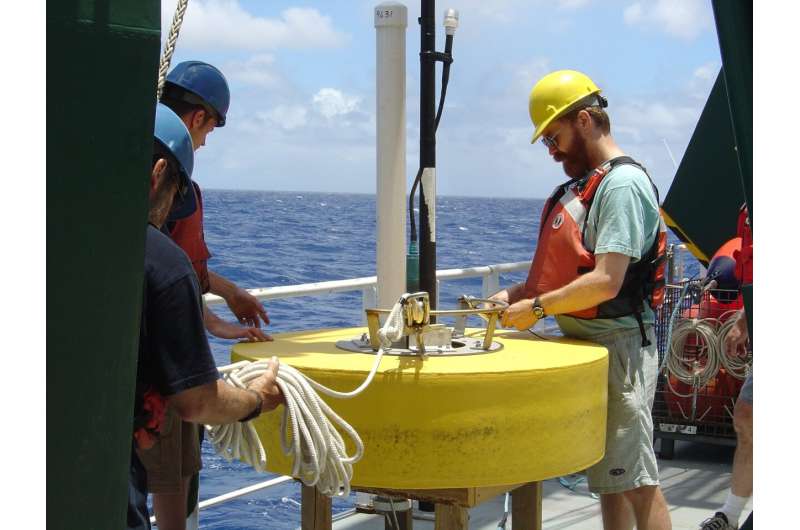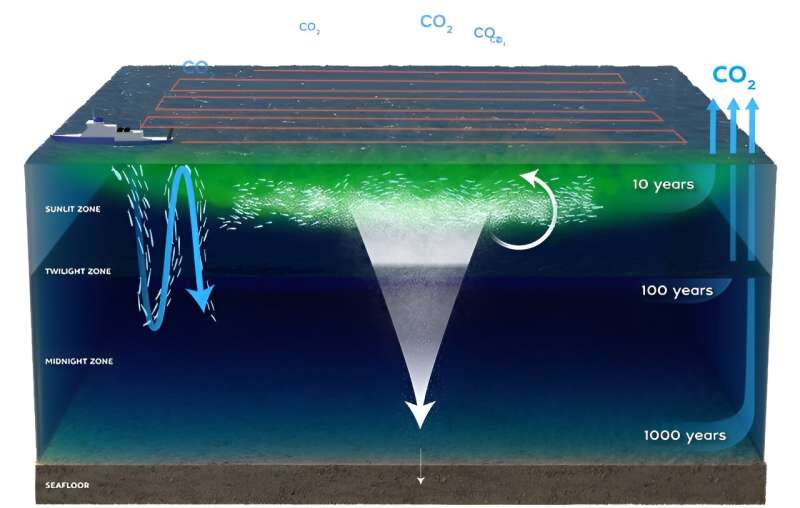
While the urgent reduction of carbon dioxide (CO2) and other greenhouse gas emissions is needed as the primary activity to curb climate change, there is broad agreement for the need to remove CO2 already in the atmosphere. Given its outsized role in CO2 storage, the ocean can’t be ignored for its potential for marine carbon dioxide removal (mCDR) to help improve our stressed climate system.
Several of the world’s leading scientific bodies, including the Intergovernmental Panel on Climate Change and National Academies of Sciences, Engineering, and Medicine, identified ocean iron fertilization (OIF) as an emerging climate solution, and more than 400 scientists signed onto a letter calling for expanded mCDR research.
Governments around the world have invested tens of millions of dollars to advance ocean-climate solutions, signaling to the public sector, philanthropy, and academia the need to explore the role of the ocean in mitigating the effects of climate change.
Now, an article published in the journal Frontiers in Climate, titled “Next steps for assessing ocean iron fertilization for marine carbon dioxide removal,” spells out the work needed to assess the potential of OIF as a low cost, scalable, and rapidly deployable method of mCDR.
According to an international experts group called “Exploring Ocean Iron Solutions” (ExOIS) that is organized around a responsible code of conduct, OIF needs to be studied to determine if it is an efficient, and environmentally and socially responsible method of mCDR.
“This is the first time in over a decade that the marine scientific community has come together to endorse a specific research plan for ocean iron,” said lead author, Ken Buesseler, Executive Director of the ExOIS program, and Senior Scientist in the Marine Chemistry and Geochemistry Department at the Woods Hole Oceanographic Institution (WHOI).
OIF is a technique to add tiny amounts of the micronutrient, iron, to the ocean’s surface to promote the growth of marine plants, or phytoplankton. This growth removes CO2 from the atmosphere, and as plankton die or are eaten, transfers some of that carbon as sinking particles for storage in the deep ocean. While large amounts of iron naturally enter the ocean, OIF is an effort to speed up that process.
“Given the ocean’s large capacity for carbon storage—more than 50 times larger than the atmosphere and 15–20 times larger than all land-based plants and soils—enhancing the ocean’s natural ability to store carbon should be considered,” according to Paul Morris, Project Manager for the ExOIS program, which is an independent program hosted at WHOI.
“Even if we could stop carbon emissions today, we would still need marine CDR because of all of the greenhouse gas CO2 already in the atmosphere,” said Buesseler.
“Despite calls by the U.S. National Academy of Science for research on carbon dioxide removal (CDR)—including marine CDR—there has been a significant gap in substantial open-ocean CDR research experiments in recent years, leaving the true efficacy and impacts of these methods largely uncertain,” said Margaret Leinen, Director of the Scripps Institution of Oceanography. She is not a co-author on the paper but has been involved in previous efforts to advance marine carbon dioxide removal studies.
“It is essential to publish and openly discuss experiment frameworks like the one presented here. Peer review and open discussion of both the scientific and societal implications of this experiment are critical for advancing our understanding and application of CDR strategies.”
According to Brad Warren, CEO of Global Ocean Health, who is not a co-author on the paper, “We need a wide range of solutions if we’re going to mitigate the devastating impacts of climate change in every community, and if ocean iron fertilization is going to be one such tool, it needs to be rigorously and independently studied and evaluated.
“The team assembled by Ken Buesseler and colleagues for this project brings the credibility, curiosity, and integrity we need to see in this field. We cannot let ocean-climate solutions become carnival acts, and that’s why I am pleased serious projects like ExOIS are aiming to lead this work.”

To move forward with understanding the suitability, efficacy, and impacts of OIF, the researchers focus on five key activities: field studies in the northeast Pacific Ocean; regional, global, and field study modeling; testing various forms of iron and delivery methods, which have differing advantages and disadvantages; advancing monitoring, reporting, and verification (MRV) for carbon and eMRV (which focuses on examining ecological changes); and advancing social science and governance efforts to go hand in hand with the physical science efforts.
The paper notes that field studies are needed to fill the knowledge gaps and target uncertainties as to whether OIF is sufficiently effective, scalable, and reproducible for mCDR. The authors said field experiments should be significantly larger and longer in duration as compared with previous OIF studies.
Even at these larger pilot scales, no permanent changes are expected, as iron is rapidly and naturally depleted and mixed in the ocean. The amount of iron added during field experiments will be many thousands of times less than the amount of iron added naturally to the ocean, such as during volcanic eruptions. However, with an increase in scale comes the ability to better quantify CO2 drawdown in the surface ocean, while also assessing the ecological and environmental consequences.
Modeling is needed for experimental planning, for synthesizing field trial results, and for predicting and extrapolating results to regional and global scales, which will be required to evaluate carbon impacts, climate effects, and overall changes to the ocean carbon cycle and ecosystem.
“We have learned in the past that conducting inexpensive and hence inconclusive field trials, or moving ahead without appropriate checks and oversight, will shut down progress as governments and the public pushback against the unknown risks of OIF and mCDR, while ignoring its potential,” the article states.
It is essential to involve public groups in discussions about whether OIF might be responsibly implemented. “It will be important to give particular attention to groups that have been historically excluded from decision-making on ocean spaces,” Buesseler added.
“This paper lays out ideas on how to study what coastal rights holders and communities think about OIF, and to make sure that their views and priorities actually shape what further explorations of OIF should look like,” said journal article co-author Sara Nawaz, director of research at the Institute for Responsible Carbon Removal at American University, Washington, D.C.
“The new design for conducting OIF experiments will integrate all the latest observational assets and produce insights from the field data, and that will advance our modeling capability to accurately assess the impact of OIF on carbon removal and ecosystem response,” said journal article co-author Fei Chai, professor at Xiamen University, China.
“Today, we have the opportunity and obligation to invest in the knowledge necessary to ensure that we can make scientifically and ethically sound decisions for the future of our planet. There is no path forward to solving the climate crisis that excludes the oceans for CDR, which along with emissions reduction will be necessary to reduce human suffering and environmental and ocean damage due to climate change,” the article concludes.
More information:
Ken O. Buesseler et al, Next steps for assessing ocean iron fertilization for marine carbon dioxide removal, Frontiers in Climate (2024). DOI: 10.3389/fclim.2024.1430957
Provided by
Woods Hole Oceanographic Institution
Citation:
The case for adding iron to the ocean for carbon dioxide removal (2024, September 9)
retrieved 9 September 2024
from https://phys.org/news/2024-09-case-adding-iron-ocean-carbon.html
This document is subject to copyright. Apart from any fair dealing for the purpose of private study or research, no
part may be reproduced without the written permission. The content is provided for information purposes only.
